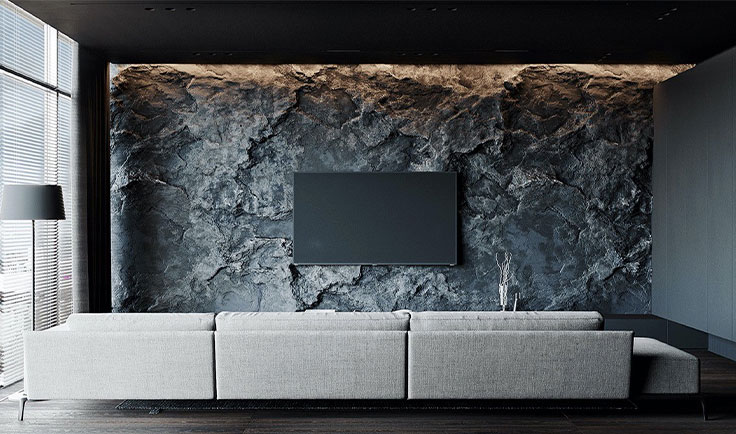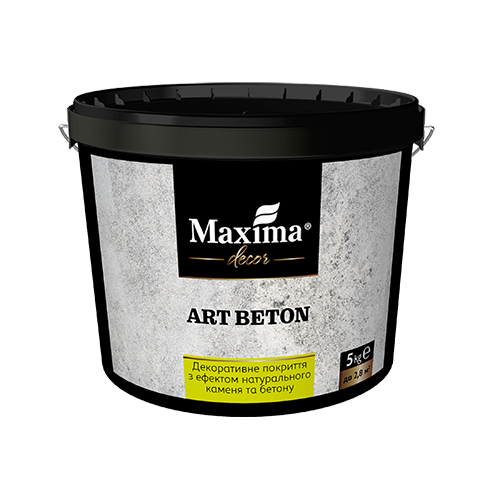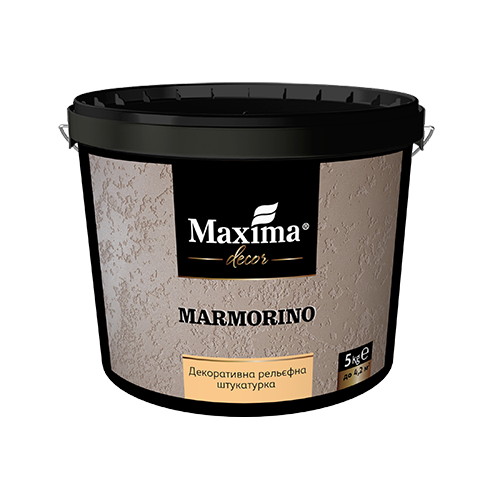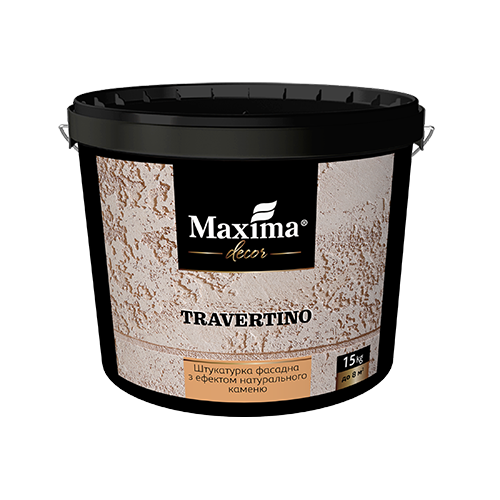All about textured plaster: from choice and methods application to design solutions
Textured (relief) plaster is a decorative coating for walls and ceilings, which allows creating various textured surfaces with a unique pattern. Textured plaster plays not only the role to equalize the surface but also adds the interior character, depth and play of shadows. Due to its wide color range and ability to create various textures, the plasters have become a popular choice for finishing living and commercial premises.
Art Beton
Decorative coating with the effect of natural stone and concrete
Marmorino
Decorative textured stucco
Travertino
Facade stucco with natural stone effect
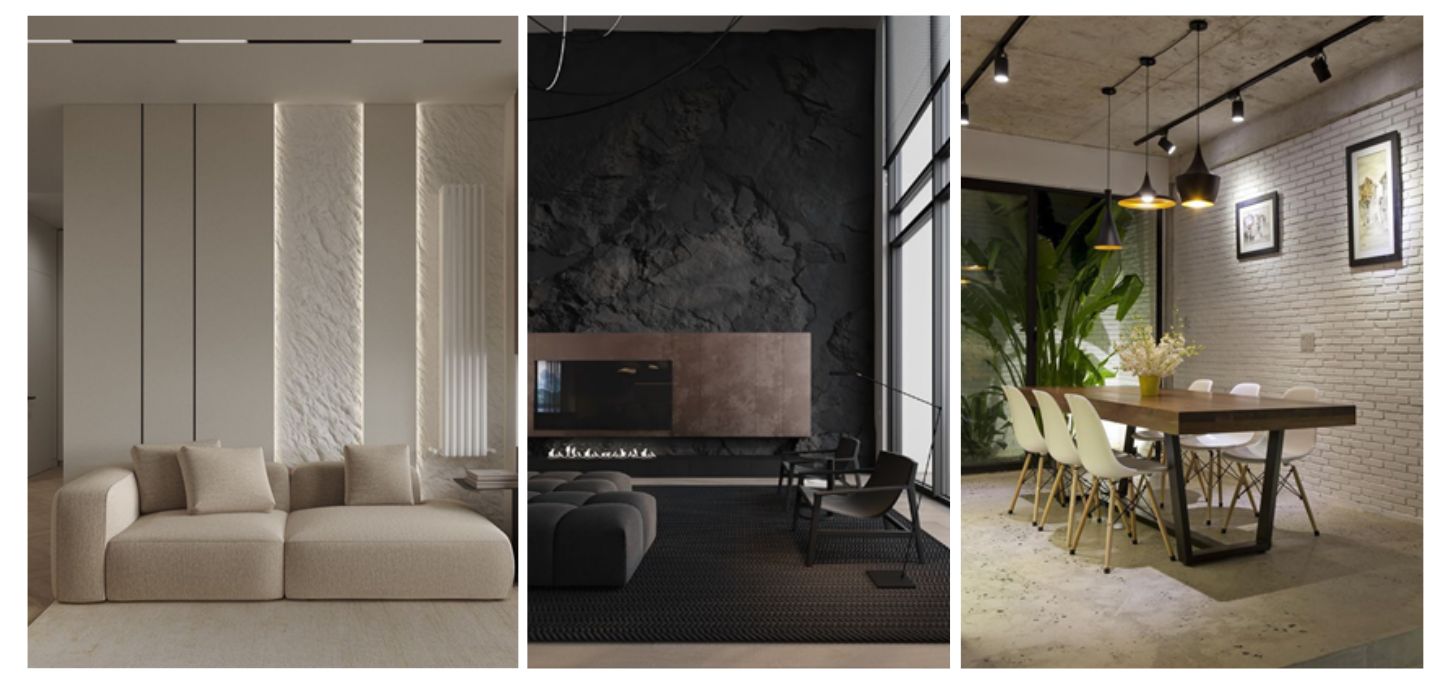
Types of textured plasters. Acrylic textured plaster and its advantages.
TM Maxima-décor collects following textured plasters under its name:
Art Beton, Travertino, Marmorino.
These are acrylic textured plastering mixtures are manufactured on the basis of polymeric acrylic resins, which are recognized by their high elasticity and hardness. They are easy to apply forming various textures – from tender waves to rough imitation of stone.
The main advantages of acrylic plasters are:
- Elasticity. It does not crack, even if the building is sagging
- High adhesion. It sticks well to various surfaces: concrete, brick, gypsum boards.
- Weather resistance. It resists temperature fluctuation and sunlight.
What is the difference between textured plasters and usual plasters?
We offer you to compare textured plasters (Art Beton, Travertino, Marmorino) with thin-layered coatings (Galaxy, Duna, Ottocento, Arabesk), which create more visual effect than the dimensional texture. The choice between them depends on the desired style.
|
Criteria |
Textured plaster | Thin-layered decorative plaster |
| Thickness of coat | 2-5 mm (it creates expressed texture) | 0,5-2 mm (smooth surface) |
| Basic effect |
Relief, 3-D effects, imitation of natural materials (stone, concrete, etc.) |
Play of light, glitter. Feeling of softness, metallic effect or play of color shades. |
|
Visual acceptation |
It creates volume and depth. It also adds texture to walls. | It looks more like elite painting. It may have fine sandy or silky effect. |
|
Difficulty of application |
It requires definite skills and special tools. |
The coatings are not so difficult to apply and you can do it with a roller or a brush. |
| Cleaning and taking care | It is easy to wash with a sponge, cloth, brush and some water with soap. It is resistant to rubbing, so it can be cleaned more actively. | Take care of the coating delicately: soft cloth, water with soap, a soft brush. Avoid intensive rubbing to keep the glittering effect. |
| Durability and protection |
It is very hard and can be coated with decorative wax (CERA), that makes taking care easier. |
It is good but needs a gentle taking care. Wax is not used. |
Therefore, textured plasters create texture and imitate natural materials, providing the walls with massiveness and aesthetic expressiveness. They are remarkable by high hardness, resistance to mechanical impacts and ease in taking care, especially if the wax was applied. Due to their properties, a textured plaster perfectly suits the premises with high exploitation loading and providing durability and practicality.
Choice of color and texture
Choosing the color and texture for decorative plaster is an important step that affects the general impression of the interior. Every texture and color creates a certain atmosphere, emphasizes the style of the premises, and affects its visual acceptance. That’s why, before you determine options, you should consider several key aspects.
The texture of the plaster can be various – from tender to massive and rough. Every type of texture makes its unique impression:
Tender texture
Tender textures with small reliefs make you feel cozy and assist relaxation. They are ideal for bedrooms, living rooms, and other resting areas.
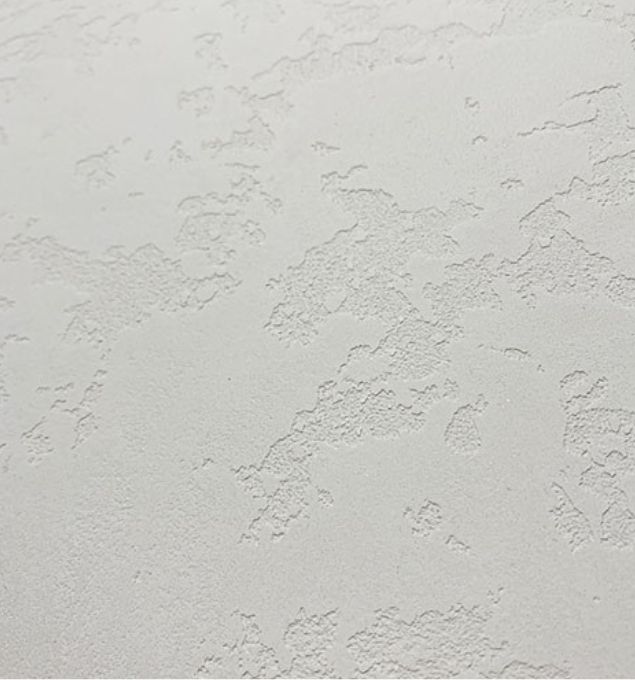
Medium-size texture
It has a medium relief, which makes the surface more expressive but it doesn’t overload the interior. Such textures make the interior sophisticated and elegant. Such textures are often used in classic and modern styles.

Rough texture
Rough textures make the interior energetic and expressive. They intended for the premises, where it is important to create an active atmosphere.
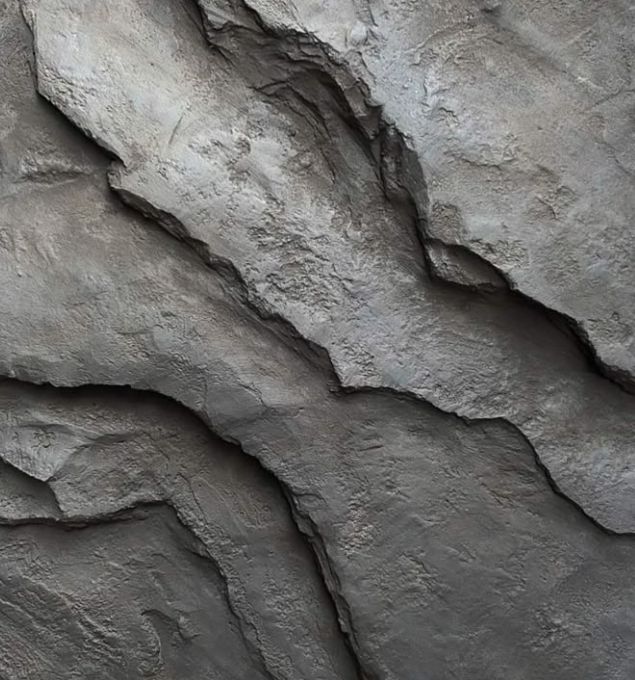
Choice of color
The color for textured plaster plays a key role in creating general impression from the interior. It can emphasize the relief of the surface, add volume or, vice versa, make it more restrained.
Light colors such as white, beige or light gray make a room visually more spacious, light and open. This is ideal for small rooms and rooms with a lack of natural light.
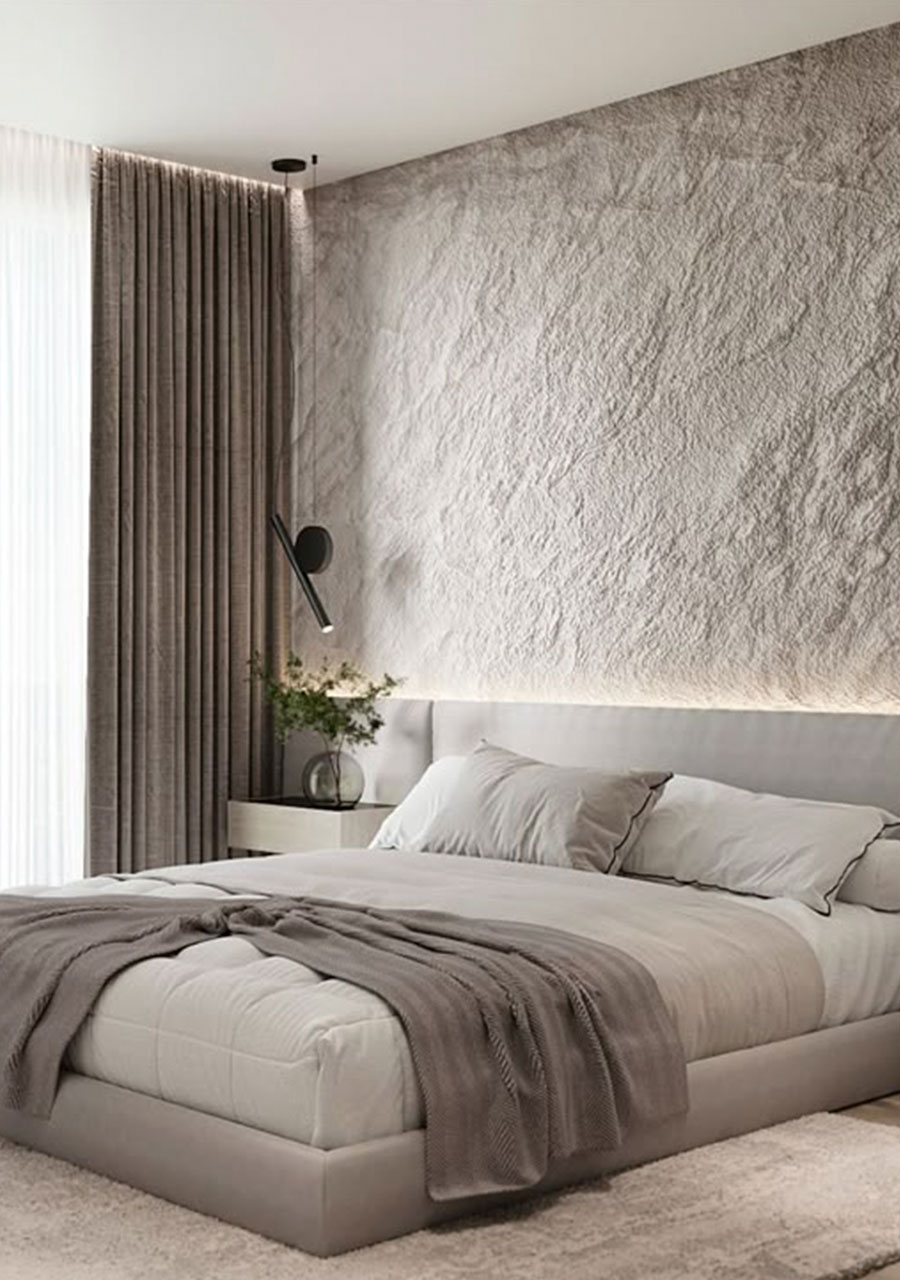
Saturated colors, for example, blue, green or burgundy add depth and expressiveness and they are often used to make accents. Natural colors, like brown, olive or terracotta make the premise cozy and in harmony with the nature. It makes them ideal for dinner rooms in eco-style or Scandinavian designs.
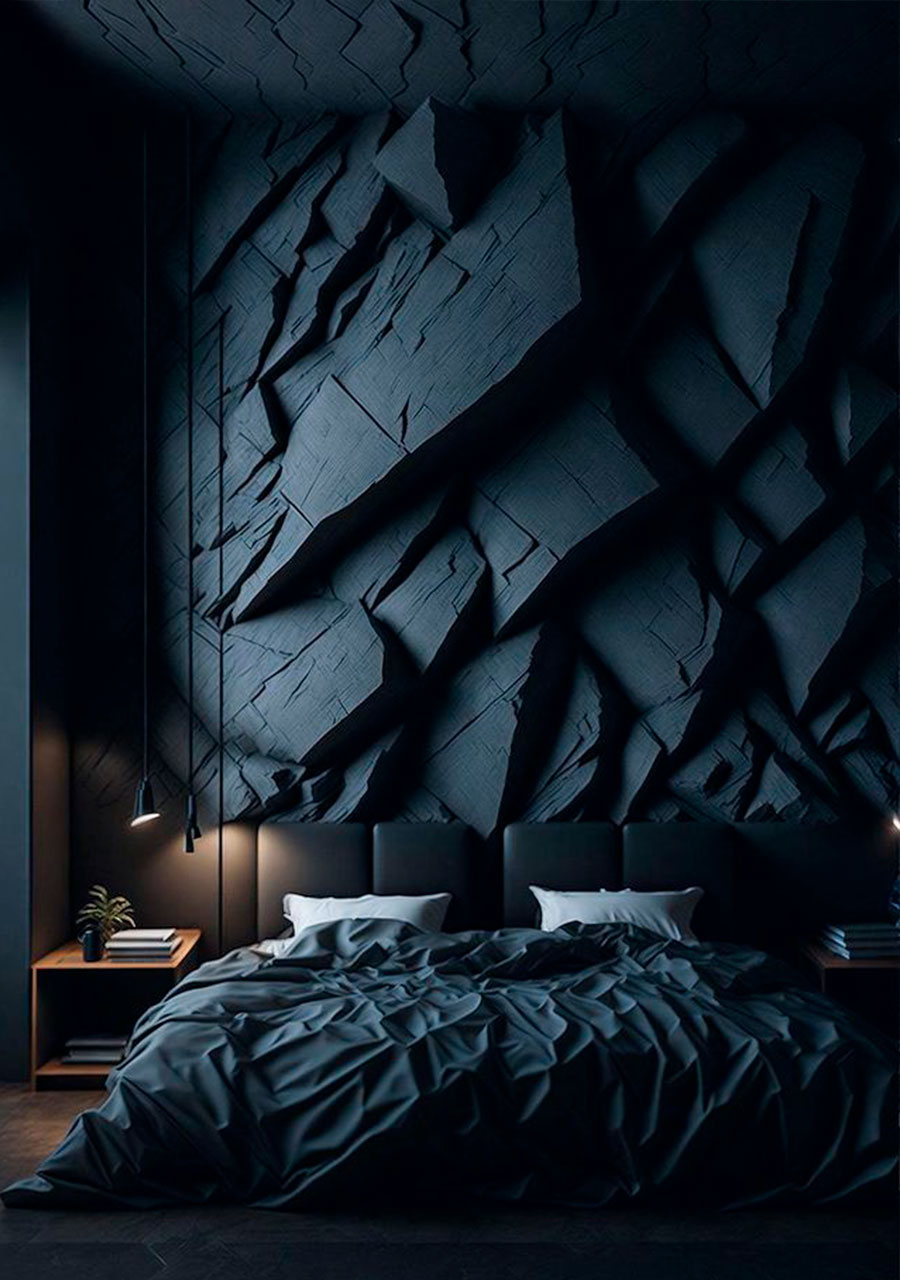
A play of light and shadows
Due to its relief, textured plaster creates a play of light and shadows and adds interior volume and dynamics. This effect is especially noticeable under natural lighting: the relief looks more expressive under sunlight, which is why people often choose smaller textures for premises with big windows. Textures look more expressive in premises with artificial lighting, especially if lit from the sides. It allows emphasizing the texture.

Methods of application for creating a texture
- Applying with a trowel or a spatula
The most widely used method, which allows creating a homogeneous coat of plaster, is with a trowel or a spatula. You can create various textures with a trowel, for example, smooth surfaces with a slight relief or more expressive patterns. - Using of textured roller
A textured roller allows creating patterns on the surface without efforts and quickly. Popular effects are "tree bark", "geometric patterns", "brickwork". This method is perfect for large areas. - Using combs or serrated spatulas
A comb allows creating lines or wavy patterns. Available effects are “waves”, “lines”, “geometric patterns”. This technique is often used to create accent walls. - Stencils (stamps)
Stencils allow creating difficult ornaments or repeated pictures, which look like brickwork, patterns or abstract pictures. This method suits those who want to add an exclusive look to their interiors. - Hand applicating
Using this technique, you may create unique abstract textures or artistic freehand. This method demands skills but allows the implementation of the bravest ideas. - Using the film
A film, applied on the surface of the plaster make a pattern of wrinkled fabric. After removing the film, the surface achieves a unique texture, which makes your interior unusual.
Textured plaster is the ability to turn ordinary walls into a real art object. The choice of the method of application and effect, which you would like to get, depends on your preferences and general interior concept.
Design solutions with textured plaster
Textured plaster is an ideal option to create unique interiors. It allows not only adding the walls expressiveness but also emphasizing the style of the premise, creating accents or even change visual acceptation of the space. Here are several ideas, how to use textured plaster in the interior design:
Accent walls
Textured plaster is ideal for creating accent walls, which become the main highlight of the interior.
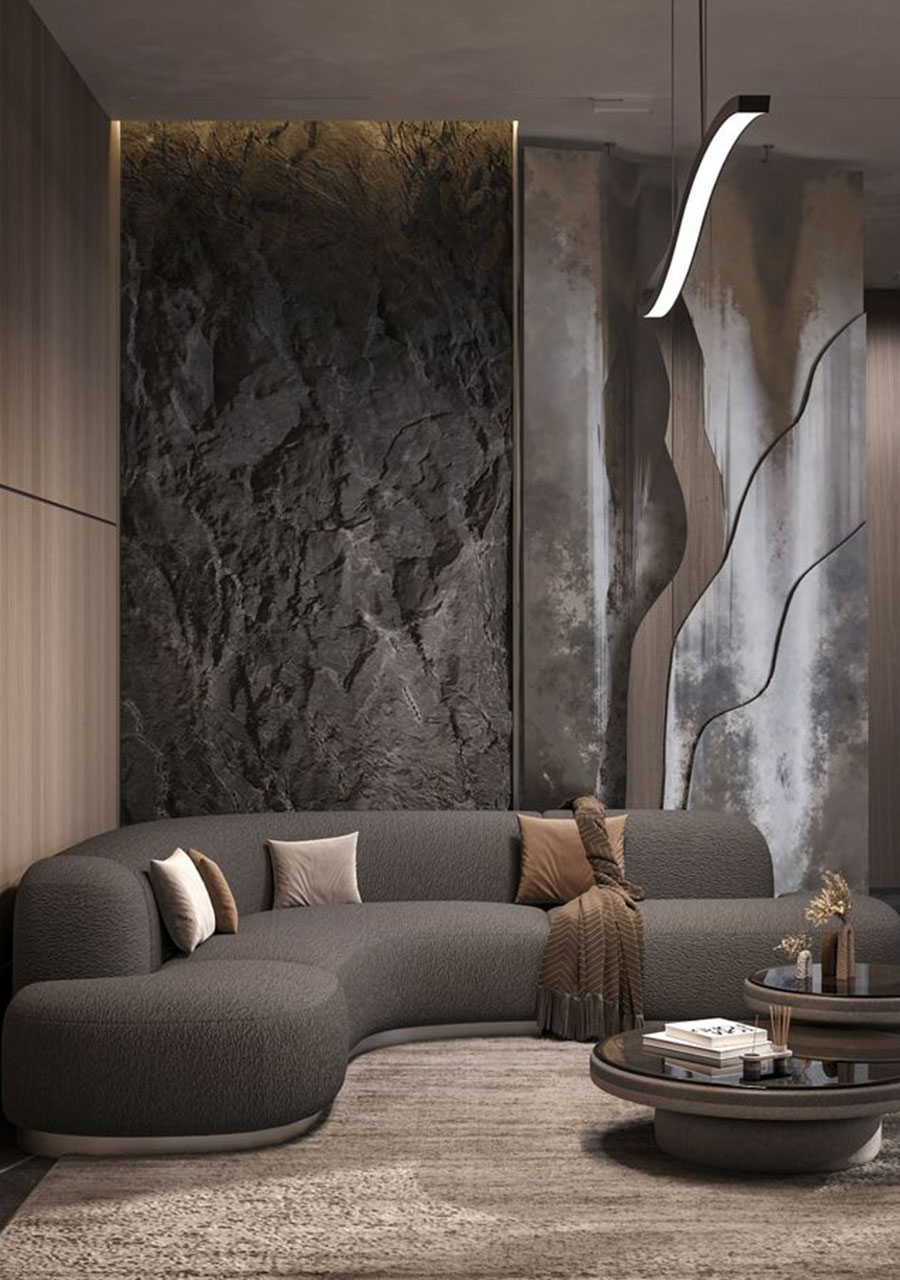
Combination with other materials
Textured plaster harmonically combines with other materials, creating interesting contrasts:
With wood: for example, the wall with textured plaster in combination with wooden panels or furniture.
With metal: rough textures of the plaster emphasize the gold glitter of metal elements.
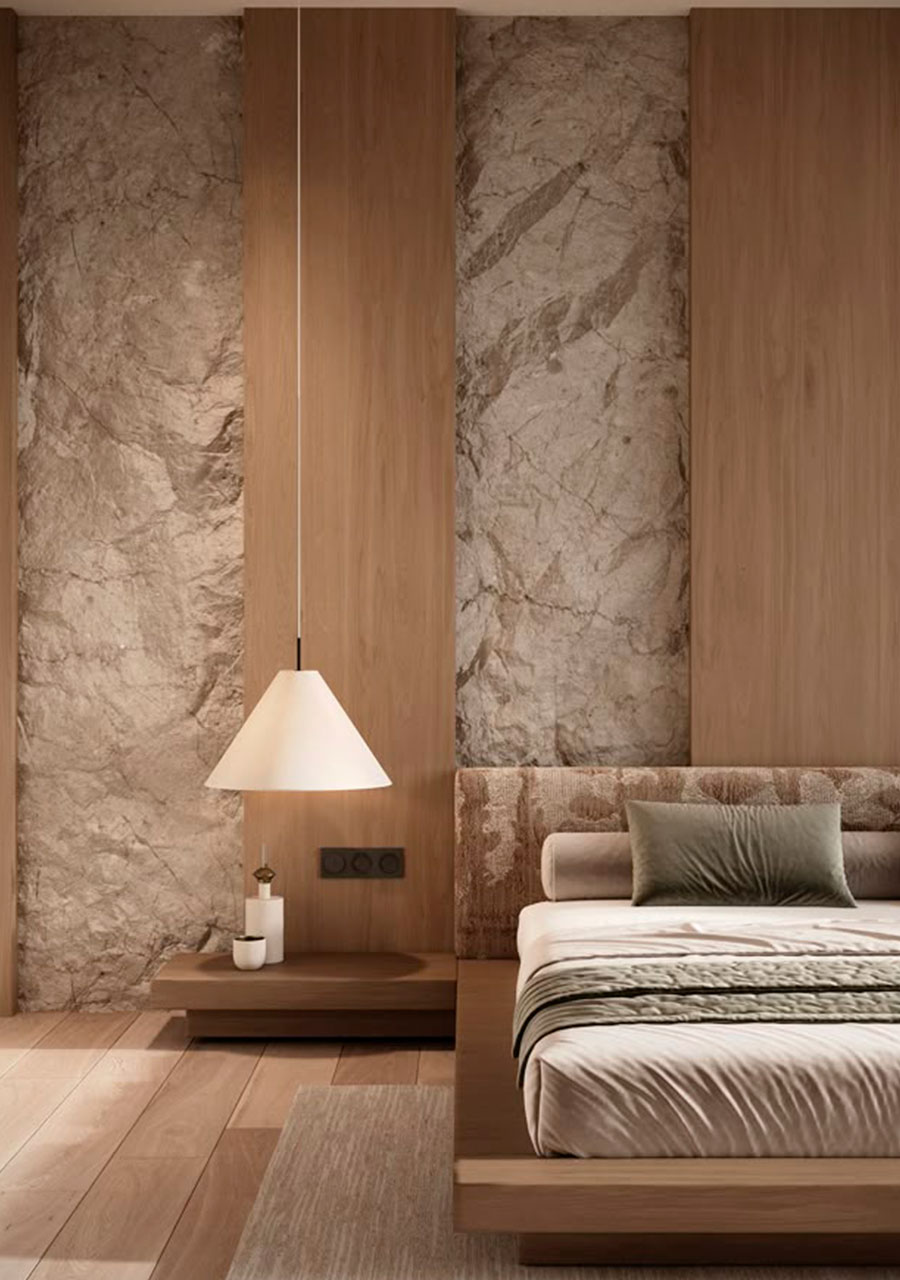
Emphasizing the style of the interior
Textured plaster suits many various styles:
Loft: rough textures emphasize industrial character of the style.
Minimalism: fine textures and neutral colors create restrained but sophisticated look.
Classics: restrained textures add interior elegancy.
Provence: textures “old-fashioned” or “stone-like” create coziness and warmth.
- 29.04.2025
